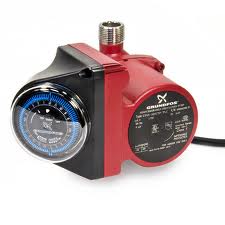 A water heater that uses a recirculating pump delivers hot water faster than a water heater without one. The pump pushes water through a loop installed throughout the house and allows hot water to be delivered to the fixtures much faster. The upside is that you don’t let a lot of cold water run down the drain, and the downside is that the heated water can give off a lot of its heat during it’s trip throughout the house. The water ends up back in the water heater at a lower temperature than when it left. I’m sure there are studies that say the water heater tends to run more due to this.
A water heater that uses a recirculating pump delivers hot water faster than a water heater without one. The pump pushes water through a loop installed throughout the house and allows hot water to be delivered to the fixtures much faster. The upside is that you don’t let a lot of cold water run down the drain, and the downside is that the heated water can give off a lot of its heat during it’s trip throughout the house. The water ends up back in the water heater at a lower temperature than when it left. I’m sure there are studies that say the water heater tends to run more due to this.
Anyway, if you’ve noticed that you are no longer getting near-instant hot water, check the pump. You might be thinking that the pump needs to be replaced, when the problem may be an easy fix. Certainly check to see that the outlet that the pump is plugged into is getting power. If it is not, it may just be a tripped GFI outlet that needs to be reset. The other possibility is that your pump may have a timer on it that is not set correctly. If there was a power outage your pump will be off for the amount of time that the power was out. Resetting the GFI outlet and checking the timer may solve your problem.
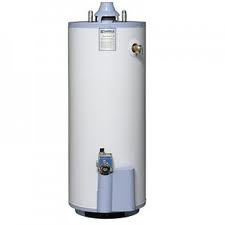 Replacing a water heater is really a series of steps that ultimately lead to you taking a hot shower. When you remove a water heater, you drain it and install a new tank (assuming you are using a tank-style storage heater). That tank is full of air and you need to bleed the air out of the system.
Replacing a water heater is really a series of steps that ultimately lead to you taking a hot shower. When you remove a water heater, you drain it and install a new tank (assuming you are using a tank-style storage heater). That tank is full of air and you need to bleed the air out of the system.
Once the new water heater is connected to the piping, you turn the water back on and start refilling it. The air in the tank now gets displaced by the water filling it. So as the water enters the tank, it pushes out the air. The air has to go somewhere, so you need to open a hot water fixture close to the tank so the air can exit the system. You will hear the air hissing as it comes out of the faucet. When water finally starts coming out of the faucet, the tank is full of water and you can shut off the faucet. Now, this doesn’t mean that there is no air still left in the system. You will likely get a few burps of air when you open different faucets within the house. Once all the air is purged, you won’t get the burping anymore.
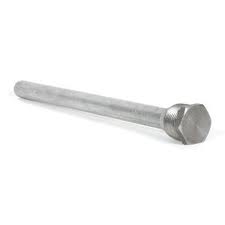 A water heater anode rod sits inside the water heater where it contacts the water. They will be located at the top of the tank (where they can be serviced).
A water heater anode rod sits inside the water heater where it contacts the water. They will be located at the top of the tank (where they can be serviced).
To find the location takes a little sleuthing. You will need to get access to the top of the water heater, which for some people might mean removing any extra insulation you have added. You might see a large nut at the top of the tank. You will need a deep socket ratchet to remove it, and it’s going to take some elbow grease.
Realize that the job of the anode rod is to sacrifice itself, so over time it erodes into nothing. So, you might remove the nut expecting to pull out a beautiful rod but all you see is a little piece of wire or a nub and think that it isn’t the anode rod. It was the anode rod and your timing to replace it couldn’t be better.
You might have to do some digging too. It may be under a plastic disc, or under fiberglass. It may even be under the cover of the tank, which will require you to remove the top cover to expose it. Finally, you may have a combination nipple/anode rod where the outgoing nipple has the anode rod attached to the bottom of it.
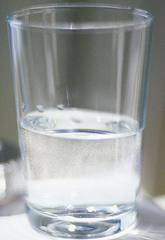 It is concerning to think you have a water heater problem. For the most part, a water heater is an expensive proposition, no matter if it is a repair or replacement. I had a customer call to ask about a problem he was having with the water coming from the hot side of all faucets in the house. The water coming from the hot side of each faucet was cloudy or milky. Naturally, since the problem is occurring at all faucets, you would consider the water heater to be the problem.
It is concerning to think you have a water heater problem. For the most part, a water heater is an expensive proposition, no matter if it is a repair or replacement. I had a customer call to ask about a problem he was having with the water coming from the hot side of all faucets in the house. The water coming from the hot side of each faucet was cloudy or milky. Naturally, since the problem is occurring at all faucets, you would consider the water heater to be the problem.
As it turns out, lots of people have milky or cloudy hot water. Water is under pressure which causes any air in the water to dissolve until the pressure is released at the faucet. Air is introduced in the system in a variety of ways from groundwater to the distribution system. If you have a lot of dissolved air in the system when the pressure is released at the faucet, you will get a milky appearance in the water. But watch it closely…the cloudiness will disappear as the air escapes. You will see the water clear in a few minutes from the bottom of the glass first (since the air rises). This is harmless and isn’t a health concern.
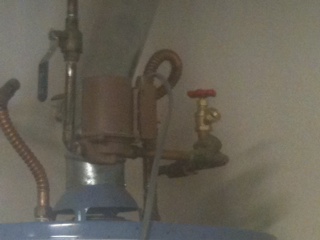 A customer installed a water heater recently, and the installation went great. However, after the installation it takes a long time for the hot water to reach the faucets.
A customer installed a water heater recently, and the installation went great. However, after the installation it takes a long time for the hot water to reach the faucets.
There are several possible reasons for the problem. Recirculating pumps need electricity to run, and so it may be as easy as plugging the unit back in or testing the outlet for power. If there is no power at the outlet, a GFI outlet or a breaker may have tripped. If this is the case, you can reset whichever has tripped and you are back in business.
You also may need to reset the timer on the pump. Some pumps have a built-in timer and so you may need to adjust the time on it (it may now be running when you are asleep and may be off when you are awake and demanding hot water). Generally, when the pump is running, it will have a slight hum to it, and it will be very warm.
If these easy fixes don’t work, you may have air in the pump that needs to be bled out of it. The air in the pump creates back pressure that won’t allow the hot-water loop to operate properly. The good news is that you can add a valve to the piping that will allow you to get rid of any air in the line.
Adding a bleed valve requires that you intercept the return line in-between the pump and the water heater. You will need to cut the return line and sweat in a copper “T”. To the top of the “T” you will install the bleed valve, which is nothing more than a glorified hose bib. After the valve you will install a shut-off ball valve. This combination allows you to divert the water from going back into the water heater and have it exit out of the valve along with any air.
There won’t be a lot of room in between the pump and the water heater, so the quarters will be a bit cramped. You will need to turn off the water and relieve the pressure before you cut the pipe. Slip in the “T”, sweat in a ball valve, and then continue the line back to the water heater.
Once everything is soldered into place, turn the water back on and check for leaks. Assuming everything is watertight, screw a garden hose onto your bleed valve and run it outside (ideally to a cleanout). Shut off the ball valve and open the bleed valve to divert the water out of the hose. Turn on the pump and let it run for a minute, then open the ball valve and shut off the bleed valve. This should purge the air and give you back your hot water quickly.
If you are in the middle of replacing your water heater, take a close look at other plumbing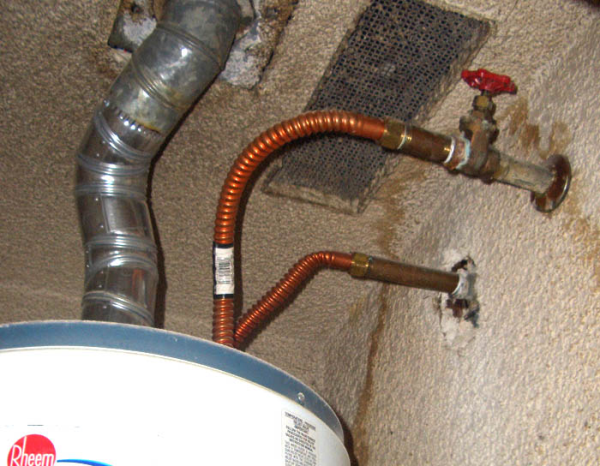 connections connecting to the appliance. In many cases as you are attempting to shut off the water at the supply valve near the top of the tank, it may not shut off at all. Particularly if the valve is a gate valve, the shaft will corrode and shear off leaving you unable to turn the control the flow of water.
connections connecting to the appliance. In many cases as you are attempting to shut off the water at the supply valve near the top of the tank, it may not shut off at all. Particularly if the valve is a gate valve, the shaft will corrode and shear off leaving you unable to turn the control the flow of water.
The supply valve connects to a flex line that finally connects to the water heater. If I see a gate valve, I don’t touch it. Instead I will turn the water off to the entire house before starting work on the water heater. While you are replacing the heater, it is a perfect time to replace the water supply valve. If you have a ball valve there (it has a lever rather than a round knob), you can be confident it will work and you shouldn’t be fearful that it will break.
Also pay attention to the areas where the valves connect to the flex lines. You may see some corrosion at these points, and if you are uncomfortable, you can replace them. I generally won’t replace them unless I see some significant problems, but at the least you can replace the rubber washers in the ends where they connect to the water heater’s nipples.
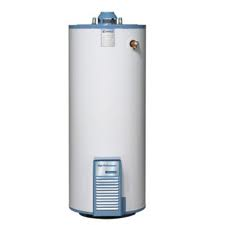 There are certainly ways you can save energy on your water heater. Many of the methods deal with the design of the system, from the length of the piping runs and how they run, to the pressure of the system. That’s fine for new construction, but what about those of us who aren’t building a new house?
There are certainly ways you can save energy on your water heater. Many of the methods deal with the design of the system, from the length of the piping runs and how they run, to the pressure of the system. That’s fine for new construction, but what about those of us who aren’t building a new house?
There are simple common sense ways, like fixing all leaks to minimize the wasting of hot water. A small leak on the hot side will cause hot water to leave the tank, only to be replaced with cold water, and eventually the burner will have to fire up.
Some easy ways to lower energy consumption from your water heater are also common sense.
Reduce the Tank’s Temperature
If you lower the temperature of the water in the tank, the water heater won’t have to heat the water as much or as long.
Use Heat Traps
Heat traps prevent hot water from leaving the tank due to convection of hot water in the piping above the water heater.
Insulation Blanket
A water heater blanket makes sense for cold climates, but in the west, many water heaters are placed in the insulated garage, and so the savings are likely negligible.
Low-Flow Shower Head
A low flow shower head (and faucet aerators) can save plenty of energy because they cut the amount of hot water leaving the tank. In other words, you use less hot water.
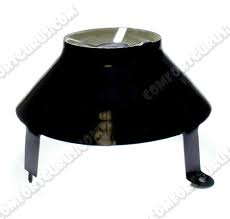 A water heater draft hood plays an important role in the operation of a gas-fired water heater, as well as maintaining a safe environment for the homes occupants. The hood sits on legs at the top of the water heater where the combustion gases exit the tank. It connects to the vent that carries the exhaust out of the house.
A water heater draft hood plays an important role in the operation of a gas-fired water heater, as well as maintaining a safe environment for the homes occupants. The hood sits on legs at the top of the water heater where the combustion gases exit the tank. It connects to the vent that carries the exhaust out of the house.
The openings under the draft hood allow ambient air to be drawn into the vent to relieve pressure at the burner. As the hot gases rise out of the middle of the tank, the gas mixes with air and it is all carried up through the vent and out of the home. It also prevents a strong down-draft from extinguishing the burner or pilot.
Draft hoods have small tabs on their legs that slide into grooves at the top of the water heater. It’s common that one of the legs will have a screw hole to hold the legs of the diverter in place. Where the top of the diverter connects to the vent, it must be connected with a minimum of three screws. There really isn’t any maintenance on a draft hood, unless you have had some roofing work done around the vent. Then it might be a good idea to check the vent and draft hood to make sure there are no separations.
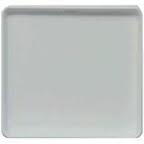 Many people have drain pans installed under their water heaters or washing machines, but it amazes me that many of those pans are not connected to a drain pipe to move the water out of the area. With that set-up, all you are doing is delaying the inevitable flood by about two minutes. Once the pan fills with water, it overflows.
Many people have drain pans installed under their water heaters or washing machines, but it amazes me that many of those pans are not connected to a drain pipe to move the water out of the area. With that set-up, all you are doing is delaying the inevitable flood by about two minutes. Once the pan fills with water, it overflows.
With a drain line installed, the water flows out via the drain pipe instead of overflowing. Without a properly installed drain pan, your water heater will create a mess when it springs a leak.
Installing a drain pan is straightforward, but it’s a pain because the water heater (or washing machine) is very heavy. This is a two-person job, so you’ll need some help. We get calls to replace drain pans from installers who have cracked the pan during installation. The pans are metal or plastic and are flimsy, so it doesn’t take much to damage them. You have to be careful setting the appliance into the pan.
You will have to drain the water heater and disconnect the piping to it. Then you can lift it up, slide the pan under it, and gently set it down into the pan.
Some pans have a knockout in the side for a drain attachment, and some you will have to drill a hole. If you have to drill, locate the hole in the sidewall closer to the bottom of the pan rather than the top. Insert a male adapter through the inside of the hole and run the pipe to the exterior. Run the pipe so that it is gravity-fed with no rise in it. In other words, the pipe should run downhill as a rise could cause the pan to overflow.
A washing machine upstairs without a drain pan is a disaster waiting to happen. Builders will install a floor drain so if a hose breaks the water at least has somewhere to go.
If you don’t have a floor drain, the job is probably a little beyond the skills of your average do-it-yourselfer. It involves installing a sanitary tee in the drain pipe above the trap but below the bottom of the pan. You’re probably better off leaving that one to the professionals.
If you have a floor drain, you can cut a hole in the bottom of the pan and install a drain connection to the floor drain. By the way, for about $30 you can buy a set of steel-braided, no-burst washing machine hoses that typically come with a 10-year warranty. They screw on in under five minutes and are well worth the money.
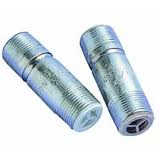 Water heater heat traps help to stop convection heat loss due to circulation of hot water in the pipes above the water heater. New water heaters will come with them installed in the nipples of the tank. They usually work in pairs.
Water heater heat traps help to stop convection heat loss due to circulation of hot water in the pipes above the water heater. New water heaters will come with them installed in the nipples of the tank. They usually work in pairs.
There are various different designs with some using a ball that travels up or down in the nipple. There are directional arrows on the nipple-type heat traps. When hot water in the tank starts to convect out of the cold nipple, the ball rises to stop the flow. There are heat traps you can buy for specific water heaters that allow you to remove the supply line from a non-heat trap nipple, and add a plastic flap mechanism that performs the same function. As a side benefit, the plastic part makes for a dielectric connection to prevent galvanic corrosion.
Finally, you can bend a high loop in your water supply lines at the top of the water heater. For this you will likely need to buy longer copper flex lines. The supply line will come out of the top of the tank rising up past the cold water shut-off valve, bend the line upward and back down without kinking the line and connect it to the valve. It’s always a good idea to insulate the copper flex lines. Typically you only need to insulate the hot outgoing line if you have heat traps as very little hot water should escape from the tank.